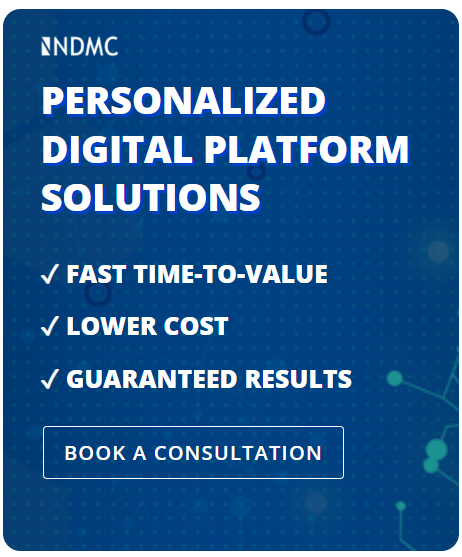Customer Data Science is the business discipline of using data to develop an appreciation of customers, their challenges, touch-points, buying preferences, behaviors and metrics. It is an aspect of Customer Experience. Without doubt, business leaders see it as an important topic these days with so much emphasis placed on data-driven decision making. Additionally, customer experience is an important aspect of creating an above and beyond customer experience.
Drivers for improved customer data management
The main pressures to leverage customer data come from:
- The management team desire to make decisions on customer growth and operations based on facts.
- Inefficiencies in targeting the most profitable customers and prospects due to a lack of profitability insights.
- An appreciation of the need to bolster the integrity of data.
- The desire to better understand customers, achieve an above and beyond customer experience and ‘do the right thing’ for them.
- The need to protect data and comply with financial services and data protection legislation.
- Recognition that in a digital era, decisions need to be made in real-time
Challenges
The fundamental inhibitor to establishing an effective customer data strategy has been the management of data, not the lack of it. Most companies are awash with data these days but it exists in a variety of enterprise systems of record, departmental systems and spreadsheets. Harnessing the potential of data has been held back by a lack of foresight into the design of enterprise data structures.
The integrity and quality of data across the enterprise has been an IT project-killer for many years. When organizations begin to harvest and re-use data, they come to realize that many systems don’t use ALL of the fields provided by vendors. They find systems lack effective population mechanisms, for example using free-text entry not drop-down fields and enforced choices. This too results in poor quality data. Another issue is the absence of data relationships between systems. Often, companies will have different systems using a variety of identifiers of ‘a customer’ and this makes it hard to gather data accurately, and trust data results.
Use of spreadsheets is itself a huge issue. Spreadsheets produce poor integrity in data and governance of data is generally poor. It means that much of the ‘tacit’ knowledge of an enterprise gets hidden away on laptop drives and USB sticks.
Organization design and culture have also paid their part in preventing customer data science to come of age. Most organizations grow by establishing departments and leaders of functions. These roles are tasked with optimizing the performance of the function and individuals are often incentivized accordingly. Over time, the needs of the department come to outweigh the needs of the enterprise and this inhibits growth. The fact that organizations will do budgeting at departmental level only serves to perepetuate the fragmentation of priorities and data.
Constructs
Within the discipline of Customer Data Science, there are some key pillars of expertise and technology that are worth mentioning.
Customer Database
Generally, the starting point for customer science is the creation of a customer database. In days gone by, this would’ve been no more than a system for managing records of customers, but today it takes on the form of a data mart that places the customer at the heart of everything in the data universe. To create a data mart of this sort requires technology and methods to harvest data, create new structures and govern the use and integrity of data. Which brings me on to the next subject – data structures.
Master Data Management
The term Master Data Management describes a method used to define and manage the critical data of an organization to provide, with data integration, a single point of reference. In the context of customer experience management, the customer is placed at the heart of a taxonomy structure that creates a single version of the truth when it comes to the customer, their journey and experiences.
Customer Data Analysis
The term Customer Data Analysis describes the methods used to make sense of customer data and maximize its value to the business. Today, a large focus of data analysis is towards how data is presented to humans to make sense of it. Over several decades, Business Intelligence software tools have developed to enable non-programmers to be able to create their own reports and data visualizations to extract value from data. More recently, businesses have turned to ready-to-use Software-as-a-Service departmental solutions that equip managers with ANSWERS to their most strategic questions, rather than giving them tools to create reports that result in answers!
Customer Data Governance
With the advent of the General Data Protection Regulation (GDPR) a new focus has been brought on the importance of protecting, managing and regulating the integrity of data. This extends to controlling who can access data and what they are permitted to see. The desire of managers and workers to download data into spreadsheets in order to re-purpose and analyze it becomes a big issue for organizational IT teams working hard to monitor the locations, quality and movement of data.
Customer Experience Explained
Customer Experience is a term used to describe the relationship a customer has with a business. Customer experience refers to the total of all experiences the customer has with the business, based on all interactions and thoughts about the business. Equally important, it is an all-encompassing term.
It includes communications touch-points, communications, emotional experience, behavior, data management, customer data platforms and technology ecosystems, and business model design implications. NDMC Consulting is an expert consultancy business specializing in customer experience strategy, management and customer data platforms.
About NDMC
NDMC has delivered projects focused around the subject of Customer Data Science since 2003. Many of our clients required more clarity over their customer profitability and buying behaviours. Furthermore, they found the use of many different software tools as being unhelpful in decision making. In the light of cloud computing advances, it’s now possible to create overarching digital platforms to harvest, process and analyze customer-related data. As a matter of fact, most data used in the enterprise is customer-related – it just takes a re-invention of data architectures to realize it!


